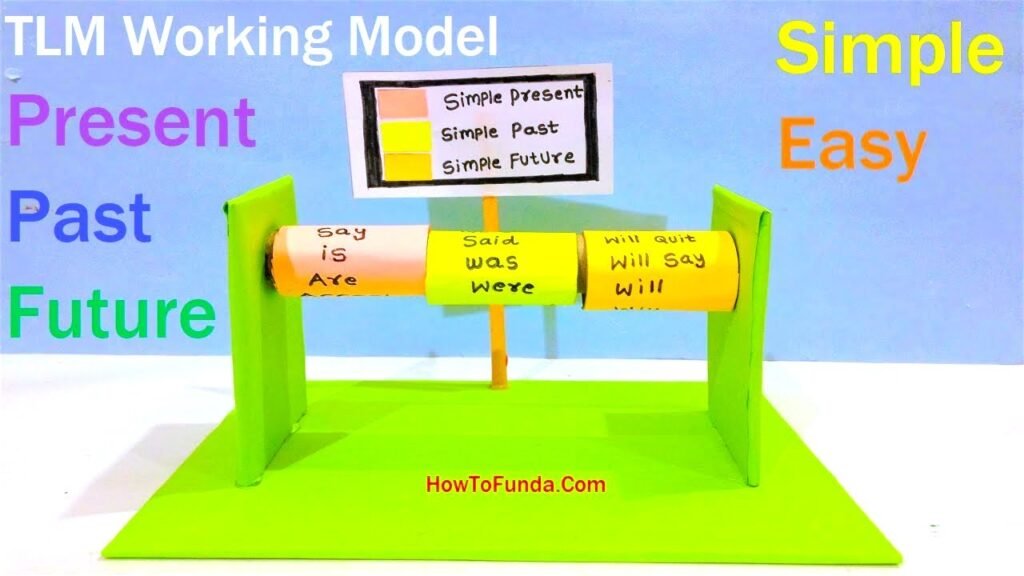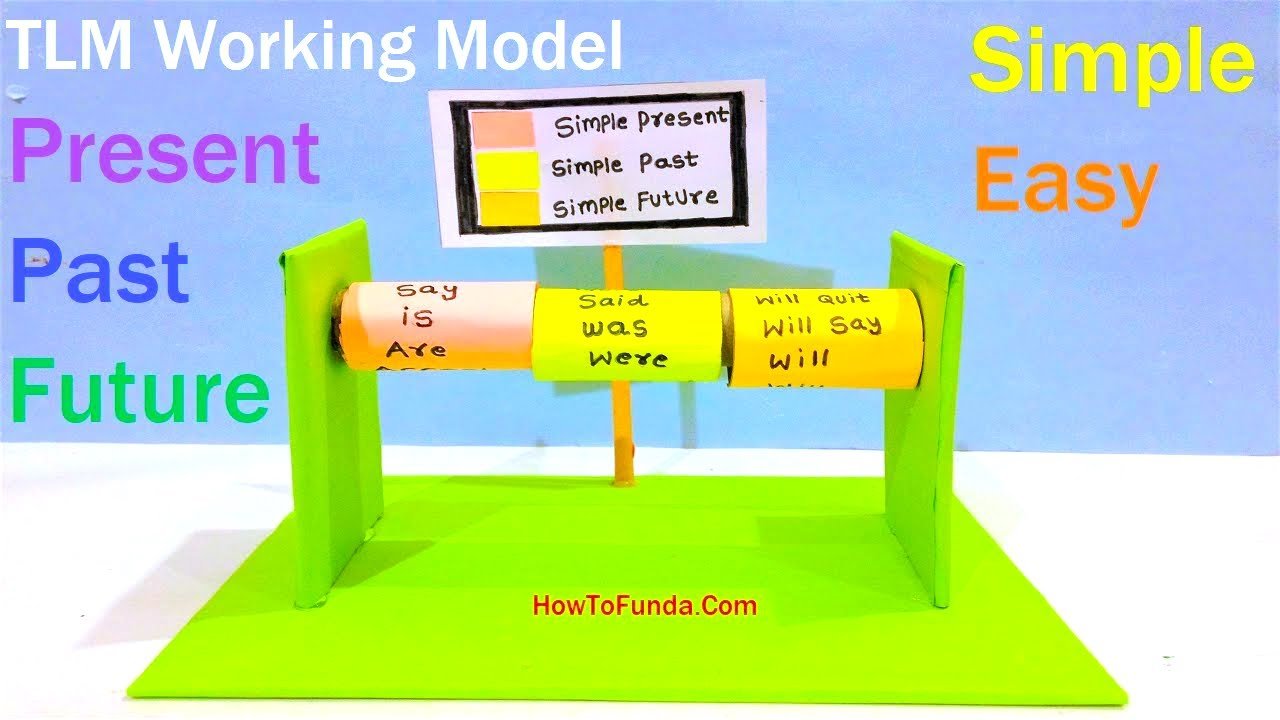Creating a teaching-learning material (TLM) working model for English tenses using cardboard and colored paper can be a fun and effective way to illustrate the concept of verb tenses.

Here’s a step-by-step guide:
Materials Needed:
- Cardboard or foam board (for the base)
- Colored paper (for decorating and labeling)
- Marker or pen (for writing and labeling)
- Scissors
- Glue or adhesive
- Brads or pushpins (for rotating parts)
- Optional: small images or icons to represent actions or events for each tense
Step by Step Video Instructions:
- Prepare the Base:
- Cut out a large piece of cardboard or foam board to serve as the base of your TLM working model. This will provide stability and support for the components.
- Divide into Sections:
- Divide the base into three sections to represent the three main tenses: Present, Past, and Future. You can use colored paper or markers to create borders or labels for each section.
- Create Rotating Parts:
- Cut out three circles or rectangles from cardboard to represent the rotating parts for each tense: Present, Past, and Future.
- Divide each circle or rectangle into sections to represent different forms of the verb tense (e.g., simple, continuous, perfect).
- Attach each rotating part to the base using brads or pushpins so that they can rotate freely.
- Decorate and Label:
- Use colored paper or markers to decorate each section of the base and the rotating parts. You can use different colors to represent each tense and its various forms.
- Label each section and form of the verb tense clearly using markers or printed labels.
- Add Examples:
- Write example sentences for each form of the verb tense on the corresponding section of the rotating parts. Use clear and concise sentences that demonstrate the usage and meaning of each tense.
- You can also include small images or icons to represent actions or events associated with each tense, making the examples more visual and engaging.
- Assemble and Test:
- Once all components are in place, assemble the TLM working model on the base and test the rotating parts to ensure that they move smoothly and accurately represent each tense and its forms.
- Educational Demonstration:
- Use your TLM working model for English tenses as a teaching tool to demonstrate the concept of verb tenses to students.
- Rotate each part to show different forms of the verb tense and explain how they are used in sentences.
- Use the example sentences and visual representations to help students understand the meaning and usage of each tense in context.
By creating a TLM working model for English tenses using cardboard and colored paper, you can make the concept of verb tenses more tangible and interactive for students, helping them grasp the nuances of grammar and language usage more effectively.

